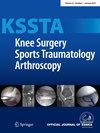Optimizing the patellofemoral compartment in total knee arthroplasty: Is it time for dynamic assessment?
Abstract
Despite improvements in implant design, surgical techniques and assistive technologies for total knee arthroplasty (TKA), anterior knee pain (AKP) remains frequently reported, even by satisfied patients. This persistent problem calls for better understanding and management of the patellofemoral or anterior compartment during surgery, just as the techniques and strategies deployed to optimize the flexion and extension spaces through personalized alignment, bone cuts and ligament balancing. Assistive technologies such as navigation and robotics provide new tools to manage this ‘third space’ through precise pre-operative planning and dynamic intra-operative assessment. Such endeavors must start with clear definitions of the ‘third space’, how it should be measured, what constitutes its ‘safe zone’, and how it affects outcomes. There are yet no established methods to evaluate the patellofemoral compartment, and no clear thresholds to define over- or under-stuffing. Static assessment using lateral radiographs provides a limited understanding and depends considerably on flexion angle, while dynamic evaluation at multiple flexion angles or using intra-operative computer or robotic-assistance enables a broader perspective and solutions to manage patellar tracking and anterior offset. Future studies should investigate the impact of variations in anterior offset in TKA, define its safe zone, and understand the effects of of thresholds for over- or under-stuffing. Experimental methods such as in-vivo motion analysis and force sensors could elucidate the influence of anterior offset on flexion and extension biomechanics.




 求助内容:
求助内容: 应助结果提醒方式:
应助结果提醒方式:


